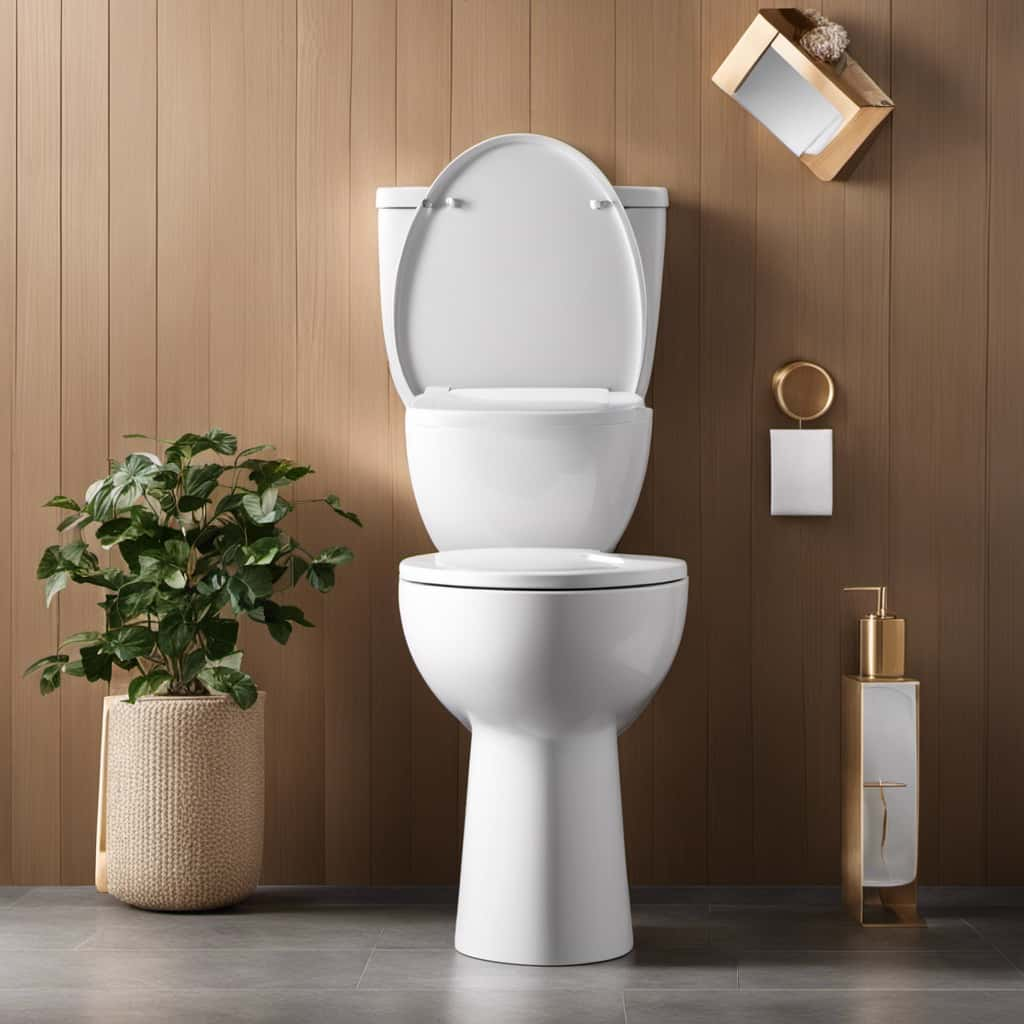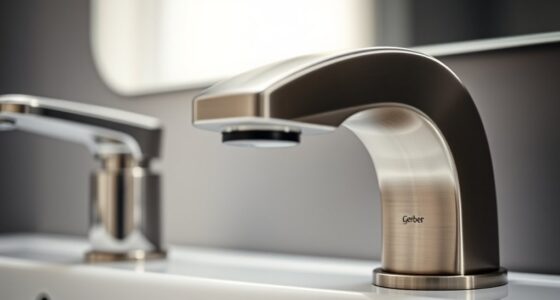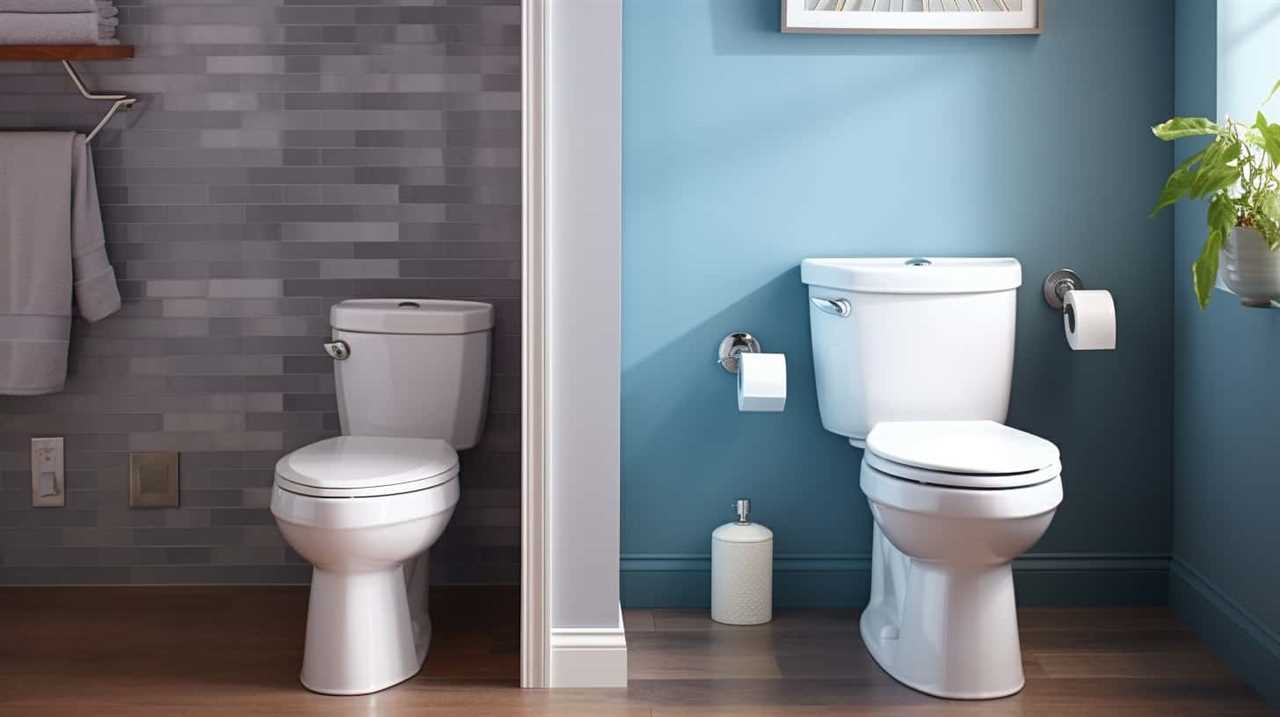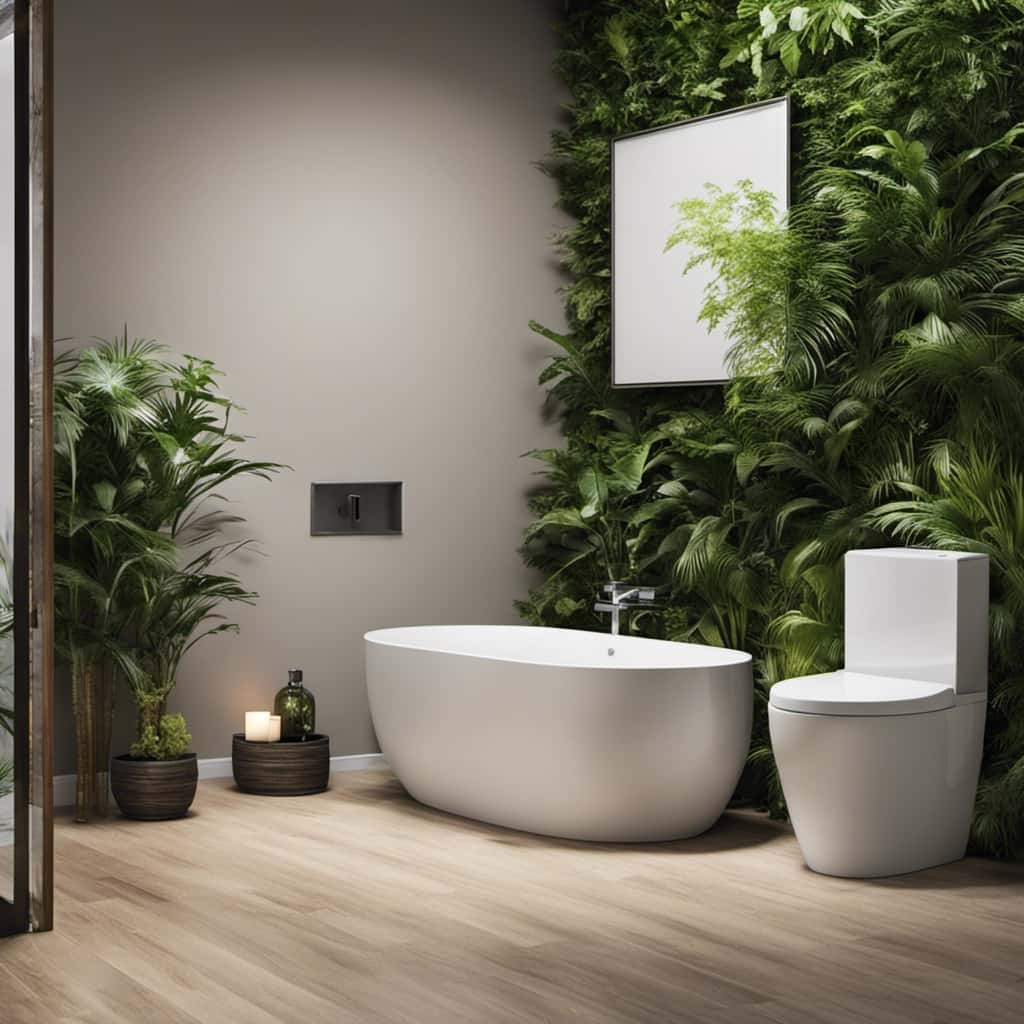As a homeowner seeking mastery in bathroom technology, I must introduce you to the marvel that is the flush valve toilet.
Prepare to be amazed by its efficient flushing mechanism, its precise control over water flow, and its ability to handle even the most demanding situations.
In this article, we will delve into the history, components, and benefits of flush valve toilets, as well as the considerations you should keep in mind before installing one.
Get ready to revolutionize your bathroom experience!

Key Takeaways
- Flush valve toilets revolutionized waste disposal in modern plumbing systems
- They use less water per flush compared to traditional toilets, making them water-efficient
- Flush valve toilets are durable and resistant to wear and tear
- Installing a flush valve toilet may require more complex installation and potential for more frequent maintenance due to clogs.
History of Flush Valve Toilets
The invention of flush valve toilets revolutionized the way waste is disposed of in modern plumbing systems. The evolution of flush valve toilets can be traced back to the 16th century when Sir John Harrington, a famous inventor, designed the first flush toilet.
However, it wasn’t until the 19th century that the concept of the flush valve was introduced. Alexander Cummings, another renowned inventor, patented the S-trap flush valve in 1775, which allowed for a more efficient and hygienic flushing mechanism. This innovation paved the way for further advancements in flush valve technology, leading to the modern flush valve toilets we use today.
As we delve into the components of a flush valve toilet, we’ll see how these inventors’ contributions have shaped the functionality and efficiency of these essential plumbing fixtures.
Components of a Flush Valve Toilet
When it comes to understanding the inner workings of a flush valve toilet, it’s important to start by examining its various components. Here are the key components that make up a flush valve toilet:

- Flush Valve: This is the main mechanism responsible for releasing water into the toilet bowl to flush away waste. It consists of a flapper or a canister that seals the water tank and a lever or button that activates the flushing action.
- Fill Valve: The fill valve is responsible for refilling the water tank after a flush. It controls the flow of water from the supply line into the tank and ensures proper water level for the next flush.
- Overflow Tube: The overflow tube prevents the water tank from overflowing by diverting excess water into the toilet bowl. It helps maintain the water level within a safe range.
Understanding these components is crucial for toilet maintenance and troubleshooting flush valve issues. By familiarizing yourself with how each component works, you can identify and resolve any problems that may arise with your flush valve toilet.
How Flush Valve Toilets Work
To understand how flush valve toilets work, I rely on the combined action of the flush valve, fill valve, and overflow tube.
Flush valve toilets, a staple of modern toilet technology, are designed with water conservation in mind. When you press the flush handle, the flush valve opens, allowing water stored in the tank to rush into the bowl. This sudden influx of water creates a strong force, which effectively flushes away waste.
Once the tank is empty, the fill valve is activated, allowing water to enter the tank and refill it. The overflow tube prevents the tank from overflowing by diverting excess water into the bowl.

This efficient mechanism ensures that flush valve toilets use just the right amount of water while still providing powerful flushing performance.
Benefits of Using a Flush Valve Toilet
Although there are various types of toilets available, I prefer using a flush valve toilet due to its numerous benefits. Here are three reasons why:
- Water Efficiency: Flush valve toilets are designed to use less water per flush compared to traditional toilets. This not only helps in conserving water, but also reduces your water bills. With increasing concerns about water scarcity, opting for a flush valve toilet is a responsible choice.
- Low Maintenance Requirements: Flush valve toilets have simple mechanisms, which means fewer parts to worry about and less chance of malfunction. This translates to lower maintenance requirements and reduced repair costs. Additionally, with fewer moving parts, there’s less likelihood of clogging or leakage issues.
- Durability: Flush valve toilets are built to withstand heavy usage and are often found in public restrooms. They’re designed to handle high traffic and are resistant to wear and tear. This makes them a reliable and long-lasting option for both residential and commercial use.
Considerations Before Installing a Flush Valve Toilet
After considering the benefits of using a flush valve toilet, it’s important to take into account certain considerations before installing one.
Flush valve toilets have several pros and cons that should be considered. One advantage is their ability to flush large amounts of waste quickly, making them ideal for high-traffic areas. However, they may require more frequent maintenance due to potential clogs.

Additionally, installation can be more complex compared to traditional toilets. It’s crucial to ensure that the water supply line is compatible with the flush valve system and that the proper drain configuration is in place. Hiring a professional plumber for the installation process is recommended to ensure proper setup and avoid potential issues.
Taking these factors into consideration will help ensure a successful installation and optimal performance of a flush valve toilet.
Frequently Asked Questions
Are Flush Valve Toilets Suitable for Residential Use or Are They Mainly Used in Commercial Settings?
Flush valve toilets, while commonly used in commercial settings, can also be suitable for residential applications. They offer advantages over traditional toilets such as increased water flow and efficiency, making them a viable option for homeowners.
Can a Flush Valve Toilet Be Retrofitted Into an Existing Bathroom or Does It Require Specific Plumbing Adjustments?
Retrofitting a flush valve toilet into an existing bathroom may require specific plumbing adjustments. However, the benefits of these toilets, such as water efficiency and durability, make the effort worthwhile for those seeking a more advanced plumbing solution.

Do Flush Valve Toilets Require More Water Than Traditional Gravity-Flush Toilets?
Flush valve toilets typically use more water than traditional gravity-flush toilets. However, they offer advantages such as faster and more efficient flushing, reducing clogs. Consider the pros and cons before deciding which type of toilet is best for your needs.
Are Flush Valve Toilets More Prone to Clogging Compared to Other Types of Toilets?
Flush valve toilets, compared to other types, do have a higher risk of clogging. The forceful flush of water through the valve can cause blockages, requiring more maintenance and attention.
Are There Any Specific Maintenance or Cleaning Requirements for Flush Valve Toilets?
Maintenance requirements for flush valve toilets include regular cleaning to prevent clogs and ensure proper functioning. Cleaning procedures involve removing debris from the flush valve and inspecting the seal for any damage or wear.
Conclusion
In conclusion, the flush valve toilet revolutionized the way we dispose of waste, offering a more efficient and hygienic solution compared to traditional methods.

Its simple yet effective design ensures a powerful flush every time, while its durability guarantees long-lasting performance.
Before installing a flush valve toilet, consider factors such as water pressure and maintenance requirements.
Prepare to be amazed by the convenience and effectiveness of this modern bathroom fixture.










